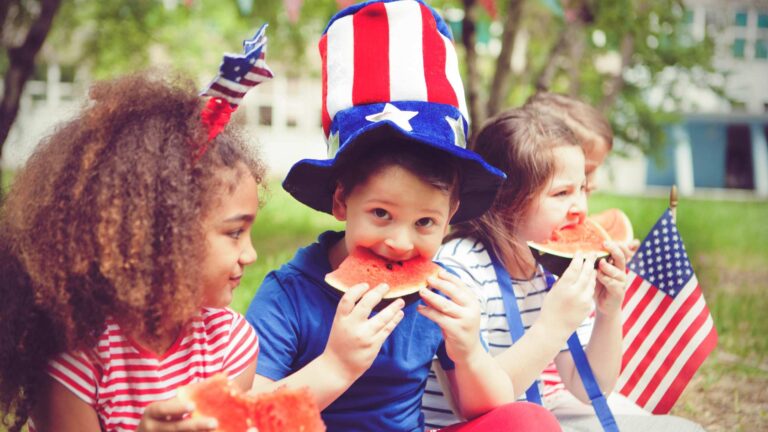The hustle and bustle of the holiday season can be difficult for anyone. The lights, sounds, people, and increased demands to participate in holiday activities add additional stress to all members of a family unit, but even more for those who have children with autism. The holiday season can mean increases in unwanted behavior. But don’t worry, there are many ways to prepare autistic children and teens for the expectations of the holiday season so that everyone can enjoy the holidays.
At ABA Centers of America, our professionals have learned a few tips to help autistic individuals and their families have a smooth holiday season. If you put a little thought into sensory-friendly swaps, you can curate a celebration that autistic people of all ages can enjoy!
1. Don’t Change Your Routines
When sleigh bells start ringing, it can sometimes mean mixing up routines to add some festive flair to day-to-day events. These changes can be difficult for a child who relies on routines. A visit to Santa might be less welcome than you’d hoped, but that’s okay!.
As hard as it may seem, maintain the same routines and incorporate holiday activities within those routines. For example, if you are taking your child to see Santa, do it when you typically go shopping or are scheduled to leave the house. Keep the current systems in place. If your child relies on a visual schedule to get through the day, make sure you continue to use it. It will be especially helpful when incorporating all these new holiday activities.
Continue your family traditions. The predictability of Elf on the Shelf, an advent calendar, picking out the Christmas tree, or going to church may be welcome activities for children.
2. Advocate, Advocate, Advocate!
The holiday season involves a lot of visiting, and you will find yourself in spaces with relatives who you may not see often. They may be unsure how to navigate your child’s needs in the same way your child may be unsure how to act towards them.
You can avoid a lot of awkwardness by letting friends and family know what they can do. They will welcome the guidance. For example, if your child isn’t fond of hugs, make sure your family knows what they can do instead (i.e., waves, high fives, etc.). This is an amazing opportunity for your child to generalize all the wonderful social skills they’ve learned throughout the year.
Another good suggestion for family gatherings is to plan for any potential special requests regarding food or space needs. Ask for the menu. If your child likes or doesn’t like certain foods, you may need to plan to bring a meal for them. If your child gets easily overstimulated, you may want to ask the host for a quiet area to decompress.
Don’t assume that your friends and family know what your child needs to have a successful visit. Be proactive, speak up, and do what you need to so that everyone can enjoy the event!
3. Practice
Children only visit Santa once a year. They only light the candles on the Menorah once a year. They may only open gifts a few times a year. It’s to be expected that they may need reminders on how to do all of these things as the holiday season approaches.
Autistic children can navigate all of these expectations with a little bit of practice. Show children videos or pictures of Santa. Practice what Santa says and what they should say to Santa. Give them the option to sit next to Santa or on his lap. Light candles and practice safety around candles. Wrap a few gifts and practice how to open them and thank you the gift giver. You can even practice this during ABA therapy sessions with the help of ABA therapists.
4. Make Space for Calm
While the general, underlying sense of holiday cheer may not bother your child, a party or celebration can sometimes be a lot. It’s the difference between a snow flurry and a blizzard. A flurry is pretty, but a blizzard requires support and reinforcements!
Preparing a calming space in advance can be a great way to plan for the blizzard. You might keep a quiet bedroom available with headphones and an iPad, fidget toys, or other comfort objects. Make sure you provide your child with communication modes to request or access this space.
5. Seek Out Sensory-Friendly Decor
Some sensory-seeking kids adore holiday decorations, like the inflatable lawn decorations. Other kids struggle with singing Santas, inflatable reindeer, and overwhelming lights. Choose decorations that will help your child meet their sensory needs. You might even want to include them when purchasing décor.
For those sensory-loving kids, make sure to explain that the decorations will eventually be going away. You might want to include a visual countdown, so they don’t get upset when Frosty the Snowman goes back in the garage for next year!
6. Accept the Gift of Help
If friends and relatives offer to help you out during this busy time of year, accept the assistance and do what you need to do! If your child gets overwhelmed in stores, allow yourself the luxury of enlisting a trusted babysitter while you walk the mall. If you want to go to a party that is unlikely to be autism-friendly, take advantage of respite services or trusted friends and enjoy!
Allow yourself to enjoy the holidays, even if it looks different from the way that your child enjoys the holidays. There is space for both!
7. Create Your Own Tradition
If you’ve been parenting a child with autism, you probably already know how to be flexible. Your daily routines might not look exactly like another family’s routines. Even so, you’ve managed to find a rhythm and make it work. Why should holiday traditions be any different?
Traditions are special because loved ones enjoy them together. They should be as unique as your family! Consider developing a new tradition that allows everyone in your home to enjoy this time of year.
Maybe that means settling down to watch the holiday episode of your child’s favorite television show every night for a month. Maybe that means adding a little bit of peppermint extract to some Play-Doh. Maybe you decorate and redecorate the tree every single night for the entire holiday season!
You don’t need to look like a Hallmark movie to enjoy the holidays and each other’s company. You just need to find what works for you and your child!
The holidays can be an overwhelming time of year for everyone. When it comes to celebrating with children with autism, a little bit of forethought goes a long way! Putting even one of these tips in place can ensure that kids with Autism Spectrum Disorder have a happy holiday season!







